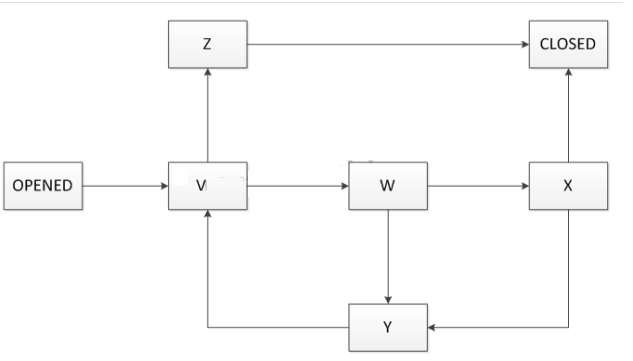At ValidExamDumps, we consistently monitor updates to the iSQI CTAL-TM_Syll2012 exam questions by iSQI. Whenever our team identifies changes in the exam questions,exam objectives, exam focus areas or in exam requirements, We immediately update our exam questions for both PDF and online practice exams. This commitment ensures our customers always have access to the most current and accurate questions. By preparing with these actual questions, our customers can successfully pass the iSQI ISTQB Certified Tester Advanced Level - Test Manager exam on their first attempt without needing additional materials or study guides.
Other certification materials providers often include outdated or removed questions by iSQI in their iSQI CTAL-TM_Syll2012 exam. These outdated questions lead to customers failing their iSQI ISTQB Certified Tester Advanced Level - Test Manager exam. In contrast, we ensure our questions bank includes only precise and up-to-date questions, guaranteeing their presence in your actual exam. Our main priority is your success in the iSQI CTAL-TM_Syll2012 exam, not profiting from selling obsolete exam questions in PDF or Online Practice Test.
Assume you are working on a defect management process to be used by a software organization to track the current status of the defects reports for several projects.
When a defect is found for investigation a defect report is created in ''Opened'' state that is the unique initial state. The defect report status has also a unique finale state that is the ''Closed'' state.
The following state transition diagram describes the states of this defect management process:
Where only the initial (''Opened'') and final (''Closed'') states are indicated while the remaining states (V, W, X, Y, Z) have yet to be named.

Which of the following assignments would you expect to best complete the defect management process?
K3 2 credits
Assume you are a Test Manager involved in system testing of a CRM application for a Pay-TV company. Currently the application is able to support a proper number of users assuring the required responsiveness. Since the business is expected to grow, you have been asked to evaluate the ability of the application to grow to support more users while maintaining the same responsiveness.
Which of the following tools would you expect to be the most useful at performing this evaluation? K2 1 credit
You are the Test Manager for a project to develop a client-server application that allows wine vendors to order custom-assorted packages of wines of several winemakers to sell special packages in their wine shops.
You decide to apply a blended risk-based and reactive testing strategy. Below the exit criteria for the system testing.
EXCR1- Each ''critical'' quality risk item must be covered by at least one test condition EXCR2- Each ''critical'' requirement must be covered by at least one test condition
The following are the ''critical'' requirements of the application:
REQ-SEL-1. The application shall allow the user to order only one package at a time
REQ-SEL-2. The application shall allow the user to select between four different packages (2-bottles, 6-bottles, 12-bottles, 15-bottles)
REQ-SEL-3. The application shall allow the user to order a package containing at least 1 bottle and no more bottles than the package size. No error messages shall be displayed if the user selects a valid number of bottles (at least 1 bottle and no more than the package size)
REQ-SEL-4. The application shall display an error message ''Invalid number of bottles'' if an invalid number of bottles is selected by the user (zero bottles or a number higher than the package size)
REQ-PAY-1. The application shall allow the user to pay with the three accepted credit cards (Visa,
MasterCard, American Express)
REQ-PAY-2. The application shall display an error message ''Invalid credit card'' if invalid credit card data are given by the user
The following is the unique ''critical'' quality risk item that has been identified:
CR-RSK-1. The GUI of the application might accept non-integer values for the input field designed to get the number of bottles from the user
Test analysis for system testing has just begun and the following test conditions have been identified.
TC-SEL-2. Test the selection of the package sizes
TC-SEL-4. Test wrong numbers of bottles for an order
TC-CR-RSK-1. Test the accepted values from the input field designed to get the number of bottles from the user
What is the MINIMUM number of test conditions that must be added to fulfill both the EXCR1 and EXCR2 exit criteria?
K3 2 credits
During the follow-up phase the following conditions are checked:
X1. The code has been completely reviewed
X2. All the identified defects have been correctly fixed and the modified code has been compiled successfully and run through all the static analyzers used by the project without warnings and errors X3. The modified code is available under the configuration management system with a new version number for the specified CI
If these conditions are fulfilled then the review process terminates.
Which of the following characteristics of a formal review is missing in this description? K2 1 credit
You are the Test Manager of a project that adopts a V-model with four formal levels of testing.
unit, integration, system and acceptance testing.
On this project reviews have been conducted for each development phase prior to testing, which is to say that reviews of requirements, functional specification, high-level design, low-level design and code have been performed prior to testing.
Assume that no requirements defects have been reported after the release of the product. Which TWO of the following metrics do you need in order to evaluate the requirements reviews in terms of phase containment effectiveness?
K3 2 credits